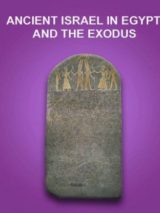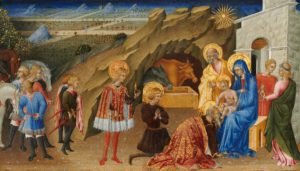Examining the figure of Balaam in later traditions
Nathan Steinmeyer April 29, 2022 0 Comments 631 views


Christ Tells His Disciples of the Last Judgment by Christoph Murer, 1630. Courtesy National Gallery of Art, Washington, D.C.
Balaam is one of the most enigmatic figures in the Hebrew Bible, and one of the earliest to be referenced outside the biblical text. In the first part of our series on Balaam, we discussed how, within his main pericope (Numbers 22–24), he is presented as neither a friend nor foe of Israel. However, among later Christian and Jewish authors, this impartial presentation swiftly changes to one that is overwhelmingly negative. Yet, at the same time, the words of Balaam took on a life of their own, being reinterpreted by both Christian and Jewish writers as a pivotal prophetic text foretelling the coming of the Messiah.
This Bible History Daily post is the second in a series that will explore this enigmatic figure and what we learn of him from the Bible, texts, and archaeology.


Balaam in the Hebrew Bible
While Balaam’s main narrative in Numbers is largely ambivalent towards the figure, save for his final appearance in Numbers 31, in the Hellenistic and later periods, the figure of Balaam takes on the mantle of the detestable enemy and false prophet par excellence. To understand this change, it is necessary to turn to other references to Balaam in the Hebrew Bible. Although Balaam’s main narrative ends in Numbers 24, he is mentioned in four other books as well: Deuteronomy 23:4–5; Joshua 13:22, 24:9–10; Micah 6:5; and Nehemiah 13:2.
Among the four biblical books, only Micah presents Balaam in a slightly more positive light, where his story is included in a list of God’s saving acts. However, the other three books are overwhelmingly negative toward the figure. While Joshua 13 makes a passing reference to Balaam being killed alongside the enemies of Israel, the other mentions go further and completely reinterpret his narrative. In Balaam’s original narrative in Numbers 22–24, he is presented as a reliable spokesperson for the divine. However, the references to Balaam in Deuteronomy, Joshua 24, and Nehemiah claim that he set out to intentionally curse the people of Israel. It was only God who intervened to actively turn Balaam’s curses into blessings. It is possible that this interpretation flows from his appearance in Numbers 31:16, where it states that Balaam had convinced the Midianite women to lead Israel into adultery. These later references do build upon the narrative presented in Numbers, although the development is not straightforward. This is the case even from the two sections of Numbers themselves.
Balaam in Jewish and Christian Commentary and Discourse
Among later sources, negative portrayals of Balaam only continue, with mentions of Balaam in the Dead Sea Scrolls, the New Testament, Jewish literature, and the early Church Fathers. Except for references to Balaam’s fourth oracle (Numbers 24:15–19, discussed below), the overwhelming majority of these portrayals can be classified as negative. Within the Dead Sea Scrolls, Balaam is mentioned in two separate non-biblical texts. In both, Balaam is included among a list of false prophets who arose in ancient Israel.1 This is consistent with how he is portrayed in other Jewish texts, including the Targum and the works of Philo of Alexandria,2 as well as within the commentaries and writings of the early Church Fathers, such as Origin and Augustine.3
The New Testament references to Balaam continue this theme, although they add another layer, namely Balaam’s love of money. Both Jude and 2 Peter call out the sinful by comparing them to Balaam “who loved the wages of doing wrong” (2 Peter 2:15). These texts seem to reference and build on the original Numbers account, in which the Moabite king Balak pays Balaam a fee to curse Israel. Whereas in Numbers 22–24, Balaam rejects the offer and insists that he will only speak the words that God gives him, these New Testament passages instead reinterpret this narrative in light of the later Hebrew Bible texts, which mention simply that Balak hired Balaam. Revelation adds yet another element, insinuating that the church in Pergamum partook in idolatry and adultery by holding to the “teaching of Balaam” (Revelation 2:14), which echoes Numbers 31:16 and Balaam’s involvement in the incident at Peor.
Balaam’s Prediction of the Messiah?
Despite the increasingly negative views of Balaam son of Beor in later literature, there was one feature of Balaam’s narrative that was reframed in a positive light. Although Balaam was viewed as a false prophet, his fourth oracle (Numbers 24:17) is often interpreted in later texts as a prophetic foretelling of the coming of the Messiah. “I see him, but not now; I behold him, but not near—a star shall come out of Jacob, and a scepter shall rise out of Israel.” This oracle appears in three separate Dead Sea Scrolls, the first being 4QTestimonia, which connects it to other prophecies predicting a future messianic figure. It does so by connecting Balaam’s “star” and “scepter” to that future Messiah. This similarly occurs in the famous Damascus Document. The War Scroll also presents this oracle as a messianic prophecy, where it concludes a battle hymn, setting this figure as the Messiah who will crush Israel’s enemies.4


The Adoration of the Magi by Giovanni di Paolo, 1450. Courtesy National Gallery of Art, Washington, D.C.
The early Church Fathers similarly gravitate to the oracle of Balaam, connecting it to the messianic figure of Jesus. One particular way that the Church Fathers do this was by linking it with the story of Jesus’s birth and the miraculous star seen by the Magi in Matthew 2:1–12. For example, Irenaeus, writing in the second century, linked the star of the Magi with that mentioned by Balaam and suggested that the Magi were descendants of Balaam.5
Balaam in Reception History
Although the main pericope of Balaam within the Book of Numbers presents him as a complex, yet unbiased, figure, later traditions and interpretations swiftly moved away from this. Instead, in the Hebrew Bible, New Testament, and later Jewish and Christian writings, Balaam is presented as an inherently villainous character. Despite this, however, the oracles of Balaam take on an astonishingly different life, being reinterpreted as messianic prophecies. Although both Christian and Jewish writers were aware of this dichotomy, they did not alter this new theological interpretation, thus leading to the multilayered and paradoxical character of Balaam son of Beor that continues to persist today.
Notes:
1 Florentino García Martínez, “Balaam in the Dead Sea Scrolls,” in George H. van Kooten and Jacques van Ruiten eds., The Prestige of the Pagan Prophet Balaam in Judaism, Early Christianity and Islam (Boston: Brill, 2008), pp. 71–82.
2 George H. van Kooten, “Balaam as the Sophist Par Excellence in Philo of Alexandria: Philo’s Projection of an Urgent Contemporary Debate onto Moses’ Pentateuchal Narratives,” in George H. van Kooten and Jacques van Ruiten eds., The Prestige of the Pagan Prophet Balaam in Judaism, Early Christianity and Islam (Boston: Brill, 2008), pp. 131–162.
3 Tord Fornberg, “Balaam and 2 Peter 2:15: ‘They Have Followed in the Steps of Balaam’ ( Jude 11),” in George H. van Kooten and Jacques van Ruiten eds., The Prestige of the Pagan Prophet Balaam in Judaism, Early Christianity and Islam (Boston: Brill, 2008), pp. 265–274.
4 See note 1.
5 Johan Leemans, “‘To Bless with a Mouth Bent on Cursing’: Patristic Interpretations of Balaam (Num 24:17),” in George H. van Kooten and Jacques van Ruiten eds., The Prestige of the Pagan Prophet Balaam in Judaism, Early Christianity and Islam (Boston: Brill, 2008), pp. 287–299.
Read more in Bible History Daily:
All-Access members, read more in the BAS Library:
Before Tea Leaves: Divination in Ancient Babylonia
Fragments from the Book of Balaam Found at Deir Alla
Not a BAS Library or All-Access Member yet? Join today.

